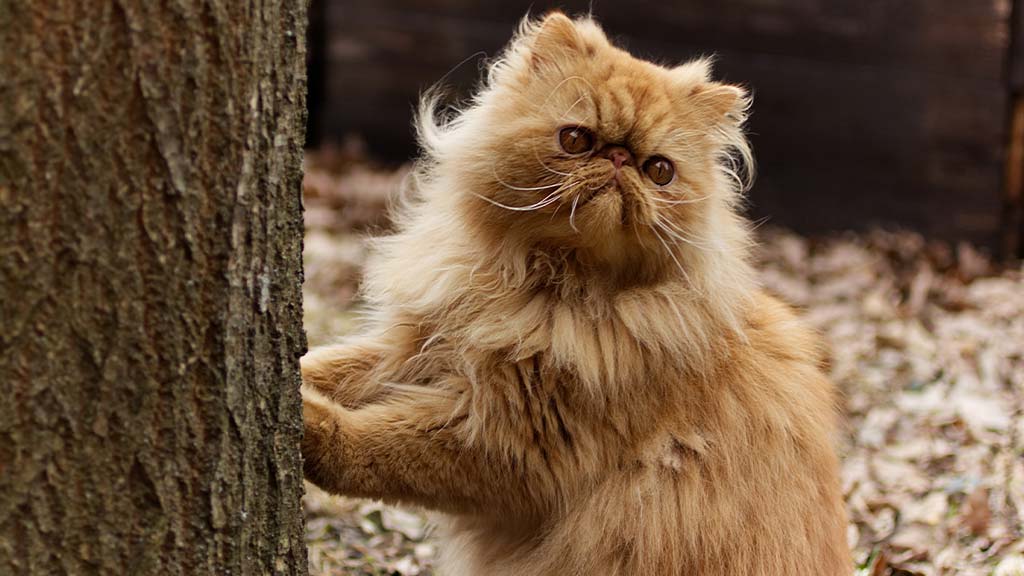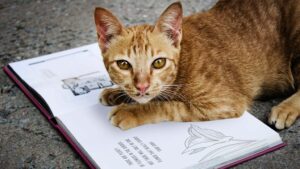The Persian Cat: Appearance, Personality Traits, Temperament, Coat Colors, Care Needs, Common Health Issues
Persian cats are synonymous with elegance and grace. With their luxurious coats, expressive eyes, and calm behavior, they have been cherished companions for centuries. Whether you’re a seasoned cat owner or considering adopting your first feline friend, this guide will provide you with everything you need to know about Persian cats — from their fascinating history to their unique care requirements.
History of Persian Cats
The Persian cat’s journey to Europe began in the 1600s when people brought them from Persia (modern-day Iran). Soon, this cat breed became a favorite among European aristocracy because of their striking appearance and gentle nature.
By the 19th century, they were a symbol of luxury, often depicted in art and literature. Selective breeding over the years has refined their features, resulting in the flat-faced, long-haired Persian cats we know today. Interestingly, the breed’s popularity soared during the Victorian era, when they were showcased in the world’s first cat shows. Today, Persian cats remain one of the most sought-after breeds worldwide.
Appearance of Persian Cats
Persian cats are so easy to spot because they’re like no other breed. First off, their faces are total perfection—super round with huge, dreamy eyes that come in shades of blue, green, or copper, depending on their coat color. Then there’s their little button nose that’s all smushed and cute, paired with tiny, rounded ears that just add to their doll-like beauty.
Body-wise, Persian cats are sturdy, medium-to-large build with short legs and a broad chest, which makes them look like fluffy little tanks. But let’s be real, their most iconic feature is that long, flowing coat—it’s like they’re walking around in a fur cape that can grow up to 5 inches long. But, that glamorous fur needs daily brushing to keep it soft, shiny, and tangle-free. Yeah, it’s a commitment, but worth it for that level of fabulousness.
Coat Color Variants in Persian Cats
The Persian cat’s coat comes in an astonishing range of colors and patterns, making each cat unique.
Solid-colored Persians are available in shades like white, black, blue, cream, and red. Shaded and smoke varieties feature a gradient effect, with darker tips fading into lighter roots.
And, if you like patterned cats, check out tabby Persians (stripes/swirls) and bicolor Persians (two colors). One of the most captivating variants is the Himalayan Persian, which has pointed markings similar to a Siamese cat. These cats often have blue eyes and a cream or fawn-base color.
Persian Cat: Personality and Temperament
Persian cats are the epitome of calm and grace. Their graceful energy, and their sweet, gentle personalities make them total heart-stealers. They live for hanging out with their humans, whether it’s cuddling on the couch or just relaxing in the same room. Unlike some high-energy breeds that are always on the go, Persians are all about that cozy life. They’ll claim the comfiest spots in your house and turn them into their personal lounging zones, which makes them perfect for apartment living.
Now, don’t expect them to be super chatty—they’re more the strong, silent type. But when they need something, they’ll hit you with the softest meows or purrs, and honestly, it’s difficult to ignore. These cats form deep bonds with their families and thrive on being pampered. Think of them as your fluffy little royalty who just wants all the love and attention.
While they’re not exactly the most playful breed, they’re not totally anti-fun either. They’ll enjoy interactive toys or the occasional play session but don’t expect them to go full zoomies mode. Their laid-back, easygoing nature makes them the perfect match for pretty much anyone — whether you’re a family, a senior, or a first-time cat owner. If you’re seeking a low-key, loving friend, Persians are the best choice.
Diet Needs of Persian Cats
Keeping your Persian cat healthy and happy starts with perfecting their diet. First things first, you have to feed them high-quality cat food that’s packed with protein and healthy fats. Think of it as their fuel for staying energetic and keeping that luxurious coat looking chef’s kiss.
Pro tip: always check the label and make sure real meat, like chicken or fish, is the first ingredient. None of that filler nonsense—your Persian deserves the good things.
Now, here’s a notable point: Persians are notorious for hairballs because of all that glorious fur. To help with that, look for food with added fiber to keep their digestion smooth. And, don’t sleep on wet food—it’s a catalyst for hydration since Persians can be a little lazy about drinking water.
But remember, Persian cats can pack on the pounds if you’re not careful. They’re not exactly gym rats, so overfeeding is a big no. Stick to a regular feeding schedule (like twice a day) and keep an eye on portion sizes. Trust us, a healthy weight means fewer vet trips and more time for cuddles. So, feed them right, keep them hydrated, and watch your fluffy royalty thrive.
Care Needs of Persian Cats
Taking care of a Persian cat? It’s a total responsibility, but you have to stay on top of it, especially with their grooming. Their fur is super long and luxurious, but it’s also a magnet for mats and tangles. You have to brush it every single day — no skipping. Start with a wide-toothed metal comb to work out any knots, and then use a soft slicker brush to make that coat smooth and shiny.
Regular baths are a must for Persian cats because you can’t let that gorgeous fur get greasy or dull. Use a shampoo that’s safe for pets, and when you’re drying them off, keep the hair dryer in a cool setting because Persian cats’ skin is super sensitive.
Persian cats are also prone to tear staining. It’s not cute, so grab a damp cloth and gently wipe their eyes every day to keep them fresh. While you’re at it, don’t forget to trim their nails every couple of weeks and check their ears for gunk. And keep their litter box clean. They’re fancy cats, so they deserve a chill, comfy space to live their best lives.
Common Health Issues in Persian Cats
While Persian cats are generally healthy, they are prone to certain genetic and breed-specific conditions.
One of the most common is polycystic kidney disease (PKD), a genetic disorder that can lead to kidney failure. Regular vet checkups and genetic testing can help detect this condition early.
Persian cats are also at risk for respiratory problems because of their flat faces, which can make breathing difficult.
Dental issues, such as periodontal disease, are another concern, so regular teeth cleaning is essential.
Obesity is a common problem in Persian cats, so monitor their diet and encourage light exercise through play. However, with proper care and attention, you can effectively manage many of these health issues.
Final Words!
Persian cats aren’t just Instagram-worthy fluff balls. They’re total heart-stealers and will become your ride-or-die bestie. Yeah, their grooming routine is high-maintenance, but it’s worth it. The love and vibes they bring to your home are next-level. Plus, they’ve got this royal, ancient history, and their chill, sweet personality.
If you’re thinking about bringing one of these majestic floofs into your life, get ready for endless snuggles, those adorable little purrs, and moments that’ll make your heart explode. Persian cats aren’t just pets—they’re family. And trust us, your life’s about to get so much better with one around.
FAQs: The Persian Cat – History, Care Needs, and Personality
- What is the average lifespan of a Persian cat?
With proper care, Persian cats typically live between 12 and 17 years.
- Are Persian cats good with children?
Yes, Persian cats are gentle and patient, making them great companions for families with children.
-
How often should I bathe my Persian cat?
A bath every 4 to 6 weeks is usually sufficient to keep their coat clean and healthy.
- Do Persian cats require a lot of exercise?
Persian cats are low-energy and do not require much exercise. However, brief play sessions can help keep them active and engaged.
- Are Persian cats hypoallergenic?
No, Persian cats are not hypoallergenic. Their long coats can trap dander, which may trigger allergies in sensitive individuals.
- How often should I groom my Persian cat?
Persian cats require daily brushing to prevent matting and tangles. Regular baths and eye cleaning are also necessary to maintain their coat and overall health.
- Do Persian cats get along with other pets?
Yes, Persian cats are calm and can get along well with other pets, especially if introduced gradually and properly.
Read 20 Most Famous Cat Quotes


